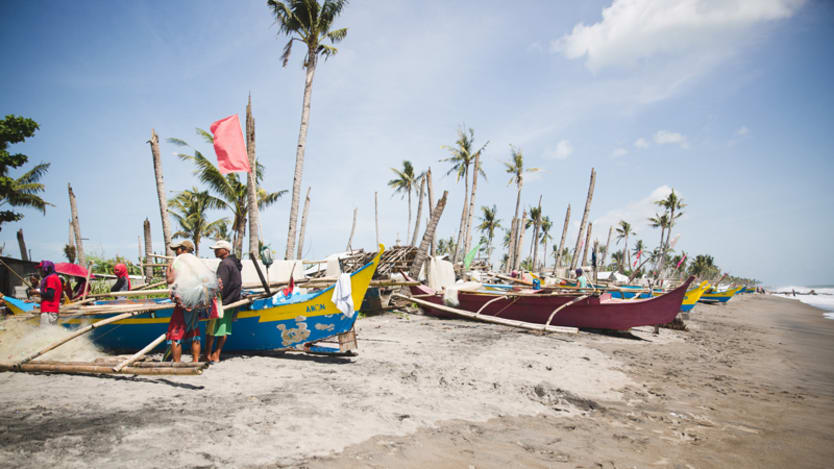
Microfinance, where small amounts of money are lent to people to start or grow a business — often in developing countries — is a familiar concept. When delivered responsibly, it helps people to earn an income to support their families.
What happens though when disaster strikes a community that is depending on microfinance for its credit requirements? People affected often lose their assets without which they are unable to earn any income to feed their families or repay existing microloans.
In the aftermath of a disaster, aid flows into communities to assist with immediate needs: Food, water, medical supplies, clothing and shelter. Aid is never a permanent solution and the monies are always stretched. People understand this and want to regain their independence and means to earn a livelihood as quickly as possible. However, to do this, they require funds to repurchase assets.
Unhelpfully, the usual response from financial services providers post-disaster is actually to reduce lending at the very moment when there is a greater demand from the community. If there is a microfinance organization operating locally, it has likely lost money on outstanding loans, because the borrowers have lost their ability to repay. The idea of lending further amounts seems very high risk, so typically, all lending ceases.
With limited funds in circulation, trade slows and the local economy can essentially grind to a halt. Without funds to stimulate trade, it is very difficult for communities to regain economic self-sufficiency. So, what can be done to help these communities, especially given that climate-related disasters are now occurring with increasing regularity?
Lending money within a devastated area, so-called “recovery lending,” has so far been met with some caution. Microfinance providers worry about clients becoming over-indebted as well as the high risk to their own institution from not being able to recoup amounts lent. Many providers have little or no experience of post-disaster lending and so they tend to overestimate the risks involved. In fact, communities that are identified as “disaster-prone” are often sadly avoided.
See more related topics:
► Kiva hits $1B in crowdfunded loans
► Expanding digital services key to financial inclusion in Africa
► How alternative credit scoring is transforming lending in the developing world
► The European Investment Bank offers advice for venture capital in Africa
Experience shows, however, that responsible lending to people who had businesses prior to the disaster is much lower risk than initially thought. Clients of the microfinance institution can use the money to repurchase assets to restore their businesses, generate income once again and pay back pre-disaster loans as well as meeting the repayments for the recovery loan. As businesses rebuild, they have a positive impact on the local community by creating jobs, generating capital and driving local trade. The benefits trickle down as the money starts to circulate and the economic recovery becomes more secure and sustainable.
Without recovery lending, business owners can be pushed towards short-term finance solutions, relying on friends, family or moneylenders which in some cases — depending on the terms of the loans — can further erode their economic standing and potentially lead to greater indebtedness.
Microfinance loans taken out before a disaster must be repaid afterwards if the microfinance provider is going to be sustainable and supportive of the community for the long-term. Recovery lending helps to facilitate this by allowing people to earn incomes, however it is very important for the microfinance institution to allow an appropriate grace period prior to demanding repayment so that the business may become re-established and generate sufficient income to provide a family’s livelihood before loan repayments resume.
For many, recovery lending is a new and untested idea and yet the positive impact has been proven. VisionFund first offered recovery lending in 2013, following Typhoon Haiyan, which left millions of people in the Central Philippines homeless, injured and without means to support their families. As part of the post-disaster work, 4,601 one-time recovery loans were paid to clients to help rebuild their businesses.
Here’s what we learned:
1. Recovery lending enables rapid client recovery — 96 percent of clients reported that the loans had supported their recovery.
2. When conducted in a responsible manner, recovery lending is affordable and does not lead to over indebtedness. Both on-time repayment rates and write-off ratios were better than our microfinance institution’s averages for regular loans.
3. Recovery lending complements other relief and recovery mechanisms as the loans are used to supplement aid, enhancing the speed and depth of recovery.
4. Recovery lending covers its costs, does not have an abnormal credit risk and is therefore an economically sustainable solution.
5. Preparation “before the event” is needed to optimise the speed and effectiveness of recovery lending. The microfinance institution needs to have access to capital to lend over and above its outstanding portfolio and to sustain itself through a grace period where initial repayments are delayed.
We have developed recovery lending programs across Kenya, Malawi and Zambia following the severe El Nino weather patterns. Similar efforts were also undertaken in Ecuador to provide recovery lending following effects from El Nino.
We have seen the benefits provided by aid and recovery lending working together. Aid supports people at their most vulnerable, whilst the recovery lending stimulates productive economic activity. The continued provision of financial services to vulnerable communities is important to their ability to be economically sustainable and to build in resilience to future shocks. Continuity, however, can only be achieved if the actual microfinance institutions are themselves sustainable. Recovery lending plays a dual role — it first and foremost helps communities recover, and secondly, ensures operational sustainability for the microfinance institution through enabling repayment of outstanding loans.
While recovery lending may appear counterintuitive, our experience is that it is effective and we continue to work with aid and development organisations globally to develop and make recovery lending more available and more efficacious for those who need it.
Join the Devex community and access more in-depth analysis, breaking news and business advice — and a host of other services — on international development, humanitarian aid and global health.








